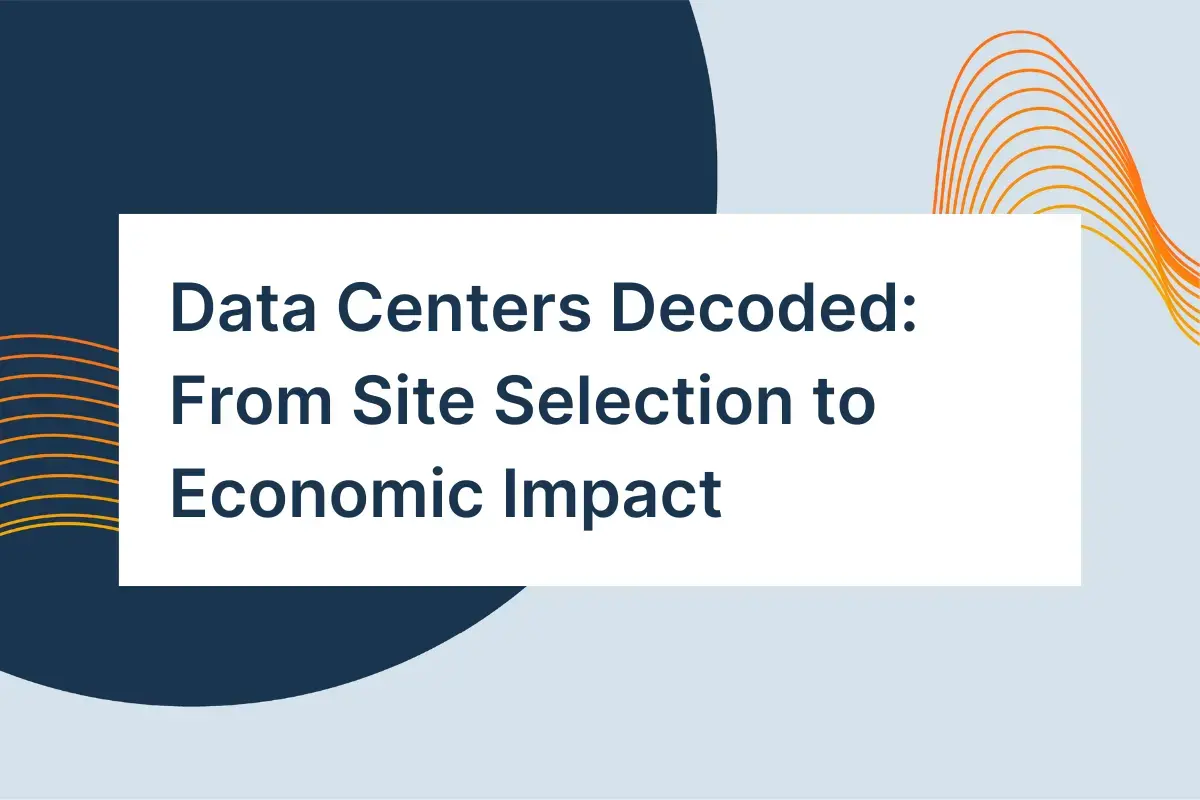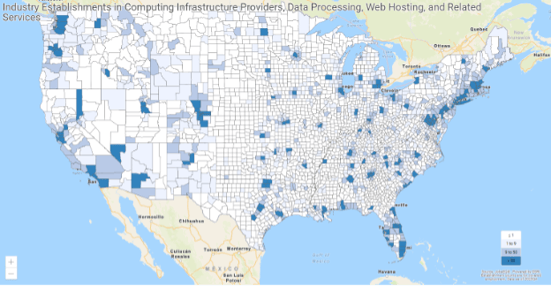Data Centers Decoded: From Site Selection to Economic Impact

By Francesco Renna |
Data centers are critical to our broad global economy and digital life. These centers play a pivotal role in developing new technologies that require computationally intensive AI applications. However, data centers absorb a vast amount of energy while generating only a handful of permanent jobs, so communities often resist locating such centers within their boundaries. Still, data centers can benefit the local community. Building a new data center, a multiyear project that can sometimes take up to ten years, boosts local demand for construction jobs. Once in operation, data centers hire hundreds of high-paying professionals in IT, operations and maintenance, and security. Furthermore, Chmura's previous economic impact studies indicate that when including property taxes from buildings and equipment, and income taxes from new jobs, data centers possess the potential to generate millions of dollars in tax revenues.
The process of selecting a site to build a new data center includes three primary determinants: power availability and cost, connectivity, and environmental and geographic considerations. Because of these stringent factors, data centers tend to cluster in specific regions. Looking at the number of establishments under the North American Industry Classification System (NAICS) code 5182101 with known locations, 2.6% of all counties host 57% of computing infrastructure providers, data processing, web hosting, and related services in the United States.
Industry Establishments in Computing Infrastructure Providers, Data Processing, Web Hosting, and Related Services

Counties with the most data centers in the US
| 1 | Los Angeles County, California |
| 2 | New York County, New York |
| 3 | District of Columbia |
| 4 | Salt Lake County, Utah |
| 5 | King County, Washington |
| 6 | San Francisco County, California |
| 7 | Maricopa County, Arizona |
| 8 | Fairfield County, Connecticut |
| 9 | Travis County, Texas |
| 10 | Denver County, Colorado |
| 11 | Fulton County, Georgia |
| 12 | Santa Clara County, California |
| 13 | Cook County, Illinois |
| 14 | Miami-Dade County, Florida |
| 15 | Wake County, North Carolina |
To better understand the factors that drive developers to decide on where to locate, they look at:
Power availability and cost
Data centers need electricity to run servers, cooling systems, and other critical infrastructure. For that reason, site selection requires determining the availability and cost of power. Increasingly, companies seek sites near renewable energy sources such as wind, solar, and hydroelectric power. This approach supports sustainability goals while providing significant cost advantages over time. Areas with lower electricity rates potentially provide substantial cost savings, particularly for large-scale data center operations.
Connectivity and infrastructure
From cloud services to real-time data processing, data center performance requires connectivity – a vital element for many applications, including rapid transfer of data between the data center and end-users or other data centers. Performance crucially requires proximity to major network hubs, fiber optic cables, and internet exchange points. It is estimated that 70% of internet traffic flows through Data Center Alley in Northern Virginia.2 The construction of this key internet exchange point, together with the presence of the largest network of subsea cable connections with Cape Town (South Africa), Bilbao (Spain), Fortaleza (Brazil), and Saint-Hilaire-de-Reiz (France), has turned Virginia into the largest colocation market in the world. Similarly, despite higher-than-average energy costs, access to key submarine cable systems linking Los Angeles to Southeast Asia and Latin America made southern California a preferred choice for this system.
Environmental and geographic considerations
Environmental and geographic factors often play a significant role in operational efficiency. Data centers generate a substantial amount of heat, necessitating efficient cooling systems. Cooler climates reduce the need for energy-intensive cooling, lowering operational costs. One should weigh this advantage with the need for close proximity to primary users. Incorporating environmental and geographic factors can significantly reduce latency and enhance performance for latency-sensitive applications.
Another fundamental consideration includes the availability of suitable land at a reasonable cost. Urban areas might offer better connectivity but come with higher land costs, while rural areas might offer more space and lower costs but could lack the necessary infrastructure. Therefore, data centers tend to gravitate to regions just outside big-tech urban hubs, such as San Francisco, Seattle, Portland, and Denver.
Conclusion
Selecting the right site for a data center requires a multifaceted approach hinging on power availability and cost, connectivity, and environmental and geographic considerations. Balancing these factors ensures that data centers can operate efficiently, cost-effectively, and reliably, meeting the ever-growing demands of the digital world. Local governments can offer financial incentives, tax breaks, and rebates to attract data center projects. Florida offers a sales tax exemption for data centers that may significantly offset initial setup and ongoing operational costs.
1 NAICS 518210 encompasses computing infrastructure providers, data processing, web hosting, and related services. This industry includes businesses that provide computing infrastructure, data processing services, web hosting services, and related services, such as streaming support services.
2 https://lightyear.ai/blogs/ashburn-colocation-data-center-alley
Subscribe to the Weekly Economic Update
Subscribe to the Weekly Economic Update and get news delivered straight to your inbox.











